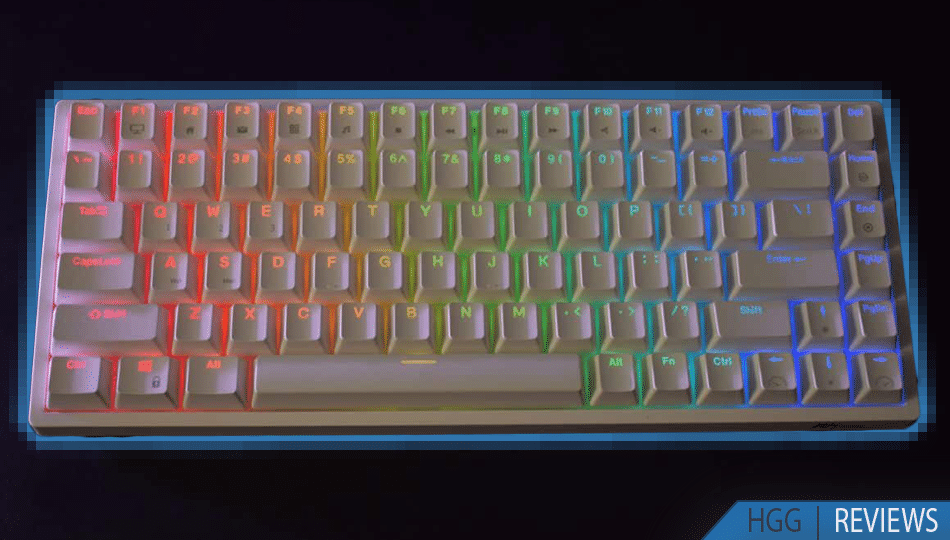Been awhile since you cleaned your keyboard? A dirty keyboard doesn’t just look awful, it can result in sticky keycaps and clogged switch housings. If you’re a gamer or hardcore user, this can easily ruin your session and sabotage your productivity. The solution? Learning how to clean a mechanical keyboard.
We’ve put together this mechanical keyboard cleaning guide so you can protect your investment and get back to the action fast. To make the process as easy as possible, the guide has been broken up by the best way to clean a keyboard for specific situations. Whether you need to perform a quick once-over, a deep clean, or a total refurbish, we’ve got you covered.
But first, let’s take a quick look at how mechanical keyboards are constructed.
A Glimpse Inside the Mechanical Keyboard
Mechanical keyboards utilize individual ‘switches’ underneath each keycap. These switches are comprised of a housing, a spring, and a stem. When a typist presses down on a keycap, the spring on the switch compresses and relays the click to the keyboard processor via an electrical signal. From there, it travels to the computer’s processor and voila! The words or, in the case of gaming, actions appear on the screen.

But what happens when a keyboard accumulates too much dust or debris around the switches? You’ve got yourself a stick-key situation (sorry). When a switch is surrounded by too much gunk, it oftentimes won’t spring back up after pressure is removed. Another common issue is that your key won’t compress at all. In fact, there are a variety of problems that you may encounter.
Fortunately, keycaps can be removed fairly easily. This allows you to quickly clean problem keys, or even remove the entire set of keycaps for a deep clean of the entire board. Don’t worry– cleaning a mechanical keyboard is easier than it sounds.
How to Clean a Mechanical Keyboard
There are many different reasons to clean a mechanical keyboard. Grease, dust, and stray crumbs are all major culprits. These circumstances are usually easy to tend to, and can be fixed in just a few minutes. Another potential cause? The dreaded spill, which can brick a keyboard if not tended to immediately.

Depending on the severity of the situation, you’ll want to opt for a preventative surface-level clean, or go all out with a deep clean. Either way, we’ll show you how to remove keys from mechanical keyboards, as well as how to safely clean a keyboard. That way, you can tend to whatever issue you encounter.
Preventative Clean
Preventative maintenance of keyboards is crucial to stop any major issues before they occur. It’s also useful for minor issues such as surface-level grime, one or two sticky keys, and similar problems. Plus, it only takes a few minutes.
Pro Tip: Before we begin, note that it’s always good to have a bottle of the best keyboard cleaner & compressed air on hand for preventative maintenance. Speaking from experience, it can be a real lifesaver.
Materials
- Keyboard compressed air or handheld vacuum
- Small brush
- Damp microfiber cloth
- Dry microfiber cloth
Process
- Optional: If you’re having issues with sticky keys, use your fingertips to take hold of the problem caps and pull them away from the board with medium force; then set them aside, as we’ll wipe them down with the rest of the board
- Unplug the keyboard and bring it to your workstation
- Take your handheld vacuum or compressed air and gently go over all the keys, focusing on the spaces between each cap
- Next, take your small brush and wipe away any excess particles
- Using the damp microfiber cloth, rub down the keyboard and any of the keycaps you removed to get rid of stuck-on grime (avoid the switches on the board)
- Dry everything with a microfiber cloth & reattach any keys
Deep Clean
If you’re experiencing several clogged switch housings and sticky keycaps, your keyboard likely needs more attention. Unfortunately, this is a lot more intensive than a simple preventative clean. That’s because you’ll need to clean the exterior of the entire board, as well as learn how to clean keycaps individually.

This will take awhile, but it’s crucial for getting your keyboard back in working order.
Materials
- Recommended: WASD Key Puller
- Bowl of warm water
- Dish soap
- Keyboard compressed air or handheld vacuum
- Small brush
- Soft sponge
- Dry microfiber cloth
Process
- First, unplug the keyboard and bring it to your workstation
- Using the WASD Key Puller or your fingertips, remove every single key from the board
- Fill your bowl with warm water and several drops of dish soap
- Submerge the removed keycaps for 3-4 hours
- Come back to the cleaning project and follow steps 3-6 from the preventative instructions above, substituting the damp cloth with the soft sponge
- Voila! A sparkling clean and like-new mechanical keyboard ready for action.

Other Considerations
Sometimes a keyboard is really dirty and even a deep clean won’t solve your problem, as is the case with major spills. In these instances, it’s all about damage control and really getting inside the keyboard itself.
That’s a bit beyond the scope of this article, but we’ve found an excellent resource that can help. Namely, the penultimate Reddit Keyboard Spill Guide. This guide is loaded with information and recommendations to help get your keyboard back in tip-top shape after a major incident.
And for things not covered there? The best option is to check the warranty and contact the manufacturer with questions or concerns. And if that still doesn’t solve your problem, you can find a bunch of awesome replacement keyboards here.









You must sign in to comment.
Don't have an account? Sign up here!